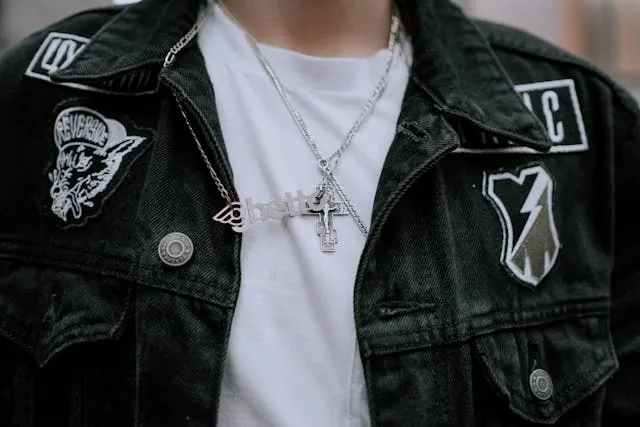How To Make Embroidered Patches By Hand: Stitches, Materials, And Fabrics
Learning how to make embroidered patches by hand offers a rewarding blend of creativity and craftsmanship. Whether you’re embellishing denim jackets, backpacks, or personal accessories, hand embroidery allows you to produce custom, meaningful designs.
In this guide, we help you understand how to embroider a patch by hand with confidence and style. Even beginners can enjoy this hobby with a few basic materials and simple steps to progress from basic hand stitched practices to intricate embroidery art.

Key Takeaways
- DIY hand embroidered patches allow for complete personalization, from motifs to colors, and you only need some simple tools and beginner stitches to start.
- Fabric choices like felt and twill work well for structure, while cotton offers flexibility. Use the right embroidery stitches for maximum strength and appearance.
- Making embroidered patches by hand supports sustainability through upcycling, and it puts you in control of your design process.
- We supply high-quality custom embroidered patches available in bulk quantities with fast turnaround times if you need professional results.
Table of contents
-
How To Make Embroidered Patches By Hand?
-
What Materials And Tools Do You Need To Make Embroidered Patches?
-
What Is The Best Thread For Embroidery Patches?
-
What Are The Best Embroidery Stitches For Patches?
-
How Do You Make DIY Embroidery Patch Projects?
-
How Do You Make And Cut Patches By Hand?
-
How Do You Back And Finish An Embroidered Patch?
-
How Do You Hand Sew An Embroidered Patch Onto Clothes?
-
Is It Hard To Make Embroidery Patches?
How To Make Embroidered Patches By Hand?
Creating embroidery patches DIY-style is an engaging process that blends artistry and technique. The first step is to select your design, with popular ideas including:
- Initials
- Symbols
- Illustrative motifs
Once you have your idea ready, you can proceed to start creating. Alternatively, upload it to our online service and we will create custom embroidered name patches and other styles to bring your design to life with professional results.

Step 1: Add The Design To The Fabric
Trace or sketch the design onto your chosen fabric. You could choose felt, twill, cotton, or other fabrics for embroidery, and sketch the design with pencil or a fabric marker, depending on your preferences.
Step 2: Start Embroidering
For the embroidery process, you should hoop the fabric to keep it taut and easier to work on. Make sure you use an embroidery needle and floss to stitch your design, and explore the best embroidery stitches for patches to create texture and contrast.
Step 3: Cut Out The Patch
Once the embroidery is complete, carefully cut around the patch, making sure to leave a small border. Add a backing for durability - good options include:
- Felt
- Stabilizer
- Iron-on adhesive
Step 4: Attach The Patch
The final step is to attach the patch to your chosen item. You can hand sew it or iron it in place if you added iron-on adhesive to the back of your patch. Making embroidered patches by hand is not only creatively fulfilling but also sustainable, as you can upcycle fabric scraps and personalize old clothing.
The result is a one-of-a-kind embellishment that tells your story. Whether you’re crafting for fun, gifts, or resale, learn how to hand embroider patches to put you in full creative control.
What Materials And Tools Do You Need To Make Embroidered Patches?
To make hand embroidery patches, you must first gather the essential tools. You will need an embroidery hoop, needle, embroidery floss, and sharp scissors. Once you have these things, you must choose your base fabric. Let’s look at some options:
- Felt or twill: These are excellent for providing structure.
- Cotton: This adds softness and flexibility.
Optional but helpful additions include stabilizer to prevent warping, heat-activated adhesive for easy application, and transfer pens to replicate your design accurately. For DIY embroidered patches by hand, quality embroidery floss enhances both appearance and longevity. Metallic threads or specialty floss may add flair, but they are a bit trickier to use.
You might also want interfacing or fusible webbing to back your finished piece. Finally, a seam ripper is always helpful to have around for correcting mistakes. Compare how much it costs to make embroidered patches this way versus having them made professionally.
Best Fabric For Homemade Patches
The fabric you choose is a hotspot in embroidery research, and will significantly impact the durability and appearance of your hand embroidered patches. Felt is a favorite, but let’s look at a broader selection of options:
- Felt: Popular among beginners and seasoned crafters, felt doesn't fray, holds stitches well, and has a plush texture.
- Twill: Another top option, this provides excellent structure and mimics professional patch quality, ideal for outerwear.
- Cotton: Lightweight and easy to work with, cotton is suitable for delicate designs or temporary projects, but may need stabilizer to prevent warping.
- Denim: Another popular choice, particularly for bold, high-contrast patches, though it can be tougher to stitch through.
Regardless of type, choose tightly woven fabrics to ensure clean lines and longevity. WHen selecting a material for DIY hand embroidered patches, test how your needle moves through the fabric.
Need high-quality embroidered patches in large quantities?
Making embroidered patches by hand is a good project, but it isn’t ideal when you need multiple patches. Work with us for custom embroidered patches in bulk.
What Is The Best Thread For Embroidery Patches?
When choosing a thread for DIY hand embroidered patches, embroidery floss is the most popular and versatile choice. Generally speaking, it consists of six easily separable strands, allowing you to adjust thickness based on your design.
Finishes for floss include:
- Cotton
- Silk
- Metallic
For durability and color retention, cotton floss is a top contender, and is popular in creating custom cloth dinner napkins.
Specialty threads like metallic or variegated can add texture and interest but may be harder to control. Polyester thread is another durable option, particularly if your patch will be exposed to moisture or regular wear.
Thickness affects the finished texture, as thicker strands make bold lines and thinner ones allow detail. Our custom embroidered patches are made with premium embroidery threads using cutting-edge techniques. We offer bulk discounts, fast turnaround times, and consistent high quality with every creation.

What Are The Best Embroidery Stitches For Patches?
Choosing the right embroidery stitches for patches enhances both durability and visual appeal. The satin stitch is a go-to for bold fills and lettering, offering a smooth, polished surface. Backstitch is essential for outlines and fine lines, while split stitch adds texture and strength.
If you are working on small accents or eyes in character designs, the French knot adds a pop of dimension. Strategic combinations of different stitch types gives your hand embroidery patches a professional look and tactile feel. Durability is key, so be sure to use denser stitches for high-wear patches.
Layering stitches also boosts texture and makes designs stand out. This is why many look for the best embroidery machines for patches to get quick, efficient access to many stitch types. If you’re new to embroidery stitching patches, start with basic outlines and gradually incorporate filling stitches.
| Stitch Type | Purpose | Visual Effect / Benefits | Best Use |
|---|---|---|---|
| Satin Stitch | Fills and lettering | Smooth, polished surface | Bold fills, text on patches |
| Backstitch | Outlining and fine lines | Clean, defined lines | Borders, detailed outlines |
| Split Stitch | Adds texture and strength | Slightly raised, textured line | Durable seams, stylised contours |
| Blanket Stitch | Decorative border and anti-fray edge | Neat, ornamental edge | Borders of patches, fray prevention |
| French Knot | Small accents and embellishments | Raised, dimensional dot | Eyes in characters, fine accents |
Choose the most popular alternative to embroidered patches
With our service, you can make patches from a wide range of materials. One popular choice is custom chenille patches, and you can start designing today.
Learn moreHow Do You Make DIY Embroidery Patch Projects?
DIY embroidered patches by hand are ideal for adding personality to jackets, jeans, tote bags, or gifts. Start with a small design - great ideas for beginners include:
- Initials
- Simple flowers
- Hearts
Sketch or trace your design onto fabric, hoop it, and begin stitching using your preferred embroidery stitches for patches. Choose threads in contrasting colors to make the design truly pop.
Once complete, cut around the patch, add a felt or adhesive backing for strength, and finish the edges with a border stitch. You can then hand sew or iron it onto your chosen item. This is a budget-friendly, sustainable hobby where you can use upcycled fabric and leftover thread, and you could even explore woven vs. embroidered patch differences if you want to consider an alternative.
DIY hand embroidered patches can make meaningful, handmade gifts. Each patch you make builds your skills and artistic voice.
How Do You Make And Cut Patches By Hand?
Once your embroidery is complete, you must shape and cut your patch by hand for a polished look. Research has found that embroidery can offer health benefits, and every stage should be approached mindfully.
Start by deciding on the final shape. Circles, ovals, rectangles, or custom outlines all work well. From here:
- Use a fabric pencil or stencil to draw your shape around the finished embroidery, leaving a ⅛” to ¼” margin.
- Cut slowly with sharp fabric scissors to ensure clean, smooth edges.
- If the fabric is prone to fraying, apply fray check or stitch a border with a blanket or overcast stitch.
Clean edges look better and can also make it easier to attach your patch securely. If you plan to back your patch with adhesive or felt, cut both layers at the same time to get an exact fit.
Making embroidered patches by hand means you get control over every detail.
Worried about the cost of ordering custom patches online?
With our service, you can create custom cheap patches with competitive pricing and generous wholesale discounts that are light on your wallet.
How Do You Back And Finish An Embroidered Patch?
Backing and finishing your embroidered patch is an essential step for structure, durability, and application. Start by trimming away any excess threads and cutting the patch to your desired shape. From here, choose a backing option:
- Felt: This adds thickness and absorbs wear.
- Fusible interfacing: This offers a flatter finish.
If you intend to iron your patch on, use a heat activated adhesive sheet or iron-on interfacing. Secure the backing by sewing around the edges with a whip or blanket stitch. Edge stitching might help to reinforce it and leave a cleaner look.
Make sure all layers are properly aligned to prevent bunching or fraying. If you’re applying adhesive backing, follow the manufacturer’s instructions for the appropriate temperature and time. One alternative to embroidered patches is to create a custom design for a cotton long-sleeve t-shirt and avoid the DIY labor.
How Do You Hand Sew An Embroidered Patch Onto Clothes?
Attaching your finished patch is the final step. Position it on your garment then pin it in place to prevent shifting. Thread a sharp embroidery or sewing needle with durable thread in a matching or contrasting color.
You should start by sewing close to the patch’s edge with a whip stitch or running stitch. Make sure your stitches are small and tight for strength and a clean appearance. Knot securely on the underside. For added durability, particularly on stretch fabrics, sew around the edge twice or use a reinforced stitch pattern.
If you have used iron-on backing, press with an iron before sewing to help keep the patch in place. Take care with thick or textured fabric as it is important to maintain even tension. Knowing how to hand embroider a patch is important, but you need to know how to attach it and, later, how to remove embroidered patches without damaging the clothing.

Create a sleek, robust alternative to embroidered patches
If you want a waterproof, vibrant alternative to embroidered patches, work with us to create custom rubber patches with any design you want.
Get startedIs It Hard To Make Embroidery Patches?
At a glance, learning how to make embroidery patches by hand might seem intimidating, but it’s easier than it looks. Like any craft, you start with simple steps and build with practice. Anyone can get started with some basic tools and beginner-friendly embroidery stitches for patches like backstitch or satin stitch.
Mistakes are a common part of the learning process. Hand embroidery gives you lots of flexibility and creativity, and you don’t need expensive tools or advanced training. All it takes is patience and interest - even making one DIY hand embroidered patch can build confidence and skill.
Whether you’re adding flair to clothing, personalizing fights, or exploring handmade fashion, the rewards are well worth the effort. If you need a professionally-finished piece or need large quantities with a fast turnaround, use our service to create custom text patches and other designs.
Frequently Asked Questions About How To Make Embroidered Patches By Hand
How To Make Embroidered Patches By Hand For Clothes?
Start with a sturdy fabric like felt or twill. Embroider your design using strong threads and secure stitches. Cut the patch out carefully, add backing, and attach it to clothing with your chosen method.
How To Finish A Hand Embroidered Patch?
Once the embroidery is done, cut your patch shape neatly and apply a backing for structure. Stitch around the edges with a border stitch before attaching to your chosen garment.